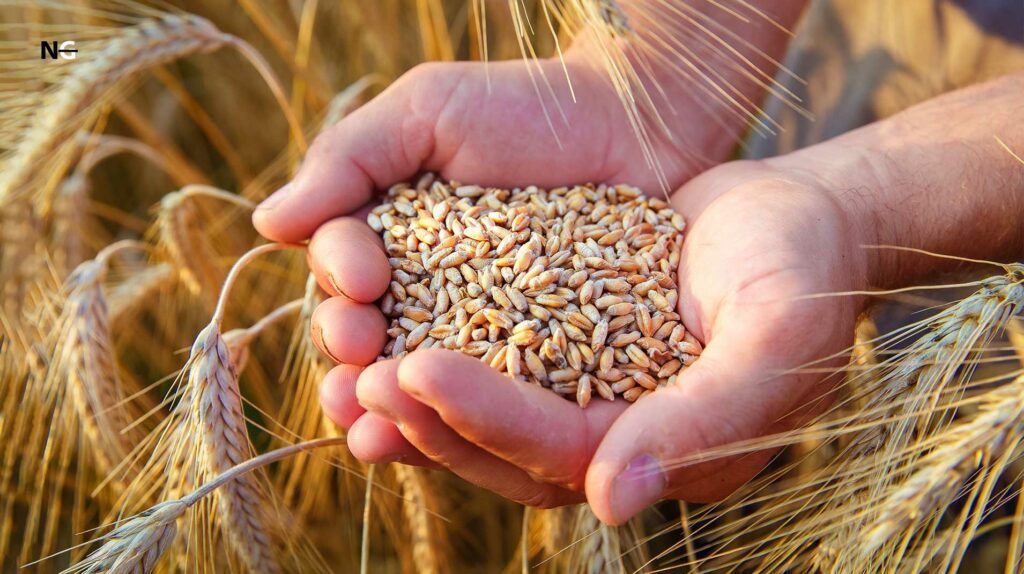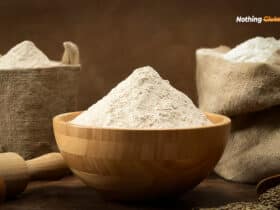Wheat germ is a common additive in cereals, granolas, and cornbread and is used as a topping in ice creams, yogurts, etc. The name wheat germ may have already scared you, and you might be wondering if the wheat germ is gluten free.
No, wheat germ is not gluten free. It’s a part of the wheat kernel, so it contains gluten like grains. Wheat germ is not safe for anyone dealing with celiac disease or gluten allergies; hence they should avoid it.
I’ll cover more details about wheat germ and why you cannot add it to a gluten free diet, what it can be, its health impact, and more. So let’s get started.
Table of Contents
Is Wheat Germ Gluten Free?

Wheat germ is the outer portion of the wheat kernel, which is somewhat similar to the husk. Wheat germ is not gluten free since it’s a part of the plant. You should note that any part of the gluten plants, whether it’s the germ, husk, or the kernel, is not gluten free.
It’s safe for people living a gluten free life to avoid wheat germ and anything that includes wheat germ. Wheat germ is a multi-purpose ingredient, so you’ll find it in a variety of foods like breakfast cereals, icecreams, etc.
So while buying such foods, make sure to check the ingredient list. People who can’t digest gluten may experience adverse health impacts like nausea, diarrhea, vomiting, etc., if they consume wheat germ.
How Is Wheat Germ Produced? Is It Bad For Your Health?

Wheat germ is actually the byproduct of wheat grains. During milling, wheat germ is removed from the endosperm due to its unfavorable baking properties.
Wheat germ has so many healthy properties; but sadly, gluten allergic people can’t have it. Wheat germ contains healthy fat, fiber, and minerals like zinc, magnesium, potassium, folate, phosphorus, etc.
Wheat germ is also an excellent source of vegetable protein. Wheat germ contains antioxidants and is rich in vitamin E as well.
Research conducted by the European Food Safety Authority shows that wheat germ oil can control cholesterol levels. Besides, wheat germ can also keep your cardiovascular system healthy and boost your immunity.
But wheat germ may not be the right choice for people following a low carb diet. A single cup of wheat germ contains 60 grams of carbohydrate, so you should be mindful of the quantity.
Nutritional information of wheat germ (per one ounce)
| Calories | 101 |
| Protein | 6.5 g |
| Carbs | 14.5 g |
| Fat | 2.7 g |
| Manganese | 3.7 mg |
| Fiber | 3.7 g |
| Thiamin | 0.5 mg |
| Phosphorus | 236 mg |
| Selenium | 22.2 mg |
| Folate | 78.8 micrograms |
| Zinc | 3.4 mg |
| Potassium | 250 mg |
| Iron | 1.8 mg |
| Vitamin B6 | 0.4 mg |
Uses Of Wheat Germ
Wheat germ has multiple uses, but the most common way is to add it as toppings in desserts, breakfast cereals, fruits, and yogurts. You can also mix wheat germ with wheat four in baked goods.
It’s used as a stuffing in meatballs and bread and added in smoothies too.
Five Gluten Free Substitutes To Wheat Germ: Celiac Patients Friendly

Since wheat germ does not fit in a gluten free diet, you should try these gluten free substitutes without fearing gluten allergy.
Rice Bran
Rice bran is a popular gluten free and healthy substitute for wheat germ. You can use it for baking gluten free cookies, bread, and toppings. When you replace wheat germ with rice bran, use equal quantities.
Like wheat germ, rice bran also contains essential nutrients and is high in B vitamins and iron.
Oat Bran
Oat bran is another great substitute for wheat germ. It’s gluten free and has the same taste and texture as wheat germ. Oat bran contains omega-3 fatty acids, iron, fiber, protein, calcium, and B vitamins.
You can use oat bran in your smoothies, baked goods, and toppings.
Ground Flaxseed
Flax meal or ground flaxseed is by far the best substitute for wheat germ. It has the same texture and nutty flavor as wheat germ, so you can replace wheat germ with ground flaxseed in any recipe.
Flaxseed contains high amounts of calcium, fiber, omega-3 fatty acids, iron, etc.
Ground Sunflower Seeds
Ground sunflower seeds are another gluten free and healthy alternative to wheat germ. Sunflower seeds have a very high fiber, fats, and protein content, but they are low on carbohydrates.
Ground Sesame Seeds
The last gluten free substitute for wheat germ is ground sesame seeds. Sesame seeds contain protein, fats, fiber, and carbs. But be careful not to over-grind sesame seeds as they are pretty oily, and you may end up with a gooey paste.
Conclusion
It’s quite clear that wheat germ is not gluten free. But you can use the gluten free substitutes for wheat germ and enjoy the same taste and texture in your recipes. If you have any more questions related to wheat germ, we would love to hear them in the comments.
We make following a gluten free lifestyle easy by informing you about both gluten free and non-gluten free foods. So stay tuned to see more related posts.
FAQs
Does Wheat Germ Make You Gain Weight?
Yes, wheat germ may make you gain weight. It’s a high-carb food; hence people following a low calorie diet should eat wheat germ sparingly.
Do You Get Gluten Free Wheat Germ?
No, you don’t get gluten free wheat germ. But you can find gluten free alternatives to the wheat germ that work as the perfect substitute.
What Is The Best Gluten Free Substitute To Wheat Germ?
The best gluten free substitute for wheat germ is ground flaxseed. It has the same consistency and nutty flavor as wheat germ.
Is Wheat Germ Good For You?
Wheat germ contains important essential nutrients and is an excellent source of protein. However, it’s not a good food item for people with gluten intolerance.










Leave a Reply
View Comments